- Home
- Susan Wittig Albert
Queen Anne's Lace Page 25
Queen Anne's Lace Read online
Page 25
“Uh-oh,” she said, staring wide-eyed at me through her tortoise-shell glasses. “What in the world happened to you?”
I had forgotten about the gauze bandage over my ear. I gave her the heavily edited version. “A deputy sheriff and I were repossessing a pair of stolen roosters when we ran into an armed farmer who thought he had to defend his pot crop.”
“Honest?” Her mouth fell open. “You’re kidding!”
“Nope. Swear to God. True story. But keep it under your hat. Charges pending.”
Lori shook her head, chuckling. “China, you lead an eventful life.”
“I left out the part where I returned fire,” I said helpfully.
“Oh, dear.” Lori sobered. “Nobody’s dead, I hope.”
“Nobody’s dead, just banged up a little. We got the roosters back, the pot farmer is headed for the county jail, and his half acre of marijuana will soon be a cloud of smoke.”
“A happy ending.”
“Mostly,” I agreed. “For the roosters, not so much.” I sighed. “Extra Crispy is okay, but he won’t be bringing home a blue ribbon.”
“That’s too bad. But Caitie entered two chickens, didn’t she? Maybe the other one will come through.” Lori looked around. “This is lovely!” she said. “I’ve been in the cottage, but never back here.” She went over to the bed to examine the log-cabin quilt, pieced in shades of browns and oranges. “What a stunning quilt! Who made it?”
“A friend,” I said. “It’s hand-pieced and hand-quilted.”
“It’s beautiful work,” she said admiringly. “And I love the crocheted lace on your pillow shams.”
I nodded. “Sometimes I think I could just move right in here myself. I wouldn’t have to drive to work, either. I could just walk across the garden.” And then I remembered. “I tried to text you a photo last night, but Ruby said you didn’t get it.”
Lori nodded. “My phone’s been out of commission. Big nuisance, really. But it’s working now. You can send the photo anytime.”
“Actually, I don’t need to send it,” I said. “Give me another minute to check out the bathroom and kitchen, then let’s go out to my car. I’ll show you the original.”
Ruby and I park our cars beside Big Red Mama (our shop van) in the graveled parking area just off the alley, at one end of the cottage. I had taken the carton of photos with me when I left the house this morning. Was it just this morning? I wondered, as Lori and I walked out to the car. It felt like a couple of centuries ago.
My Toyota was parked in the sun, so it was blistering hot when I unlocked the door. I took out the carton of photographs and rummaged through it until I found what I was looking for: the studio portrait of the baby in the christening dress and cap, posed in a parlor chair beside a small table with an open book and a crystal vase of white cabbage roses. It was the second photo to mysteriously appear on my bulletin board, and I still didn’t understand why.
“Here it is,” I said, handing it to her. “That dress reminded me of the christening dress your aunt gave you when you went to Waco a few days ago. That’s why I thought of sending the photo to you.”
Lori looked at it and blinked. “China,” she whispered. “China, I already have this photograph!”
“You already have it?” I frowned. “I thought you didn’t get my text.”
“I didn’t. But when Aunt Jo gave me my birth mother’s christening dress, she gave me several photographs. This—” She held it up. “This was one of them. She said that the dress and the photos had been in the family for generations, so I was assuming that the baby—it’s a little girl—could be one of my long-ago relatives.” She turned the photo over. It was blank. “The one I have has a date written on the back, though. I don’t remember the day, but it was June 1890.”
“You’re saying it’s the very same photo?” The hair was standing up on the back of my neck. “Are you sure?”
“Positive.” Her voice was awed. “What’s more, China, Aunt Jo gave me the dress that this baby is wearing! I’ve compared the two. The pattern on the lace panel on the front of the dress is distinctive. No mistake. They’re the same.” She bit her lip. “So I guess I have to ask—where did you find my family photo?”
“It was in the carton we took out of the storeroom.” I omitted the thing about the ghost posting it to the bulletin board. That would only confuse an already mystifying situation. “Do you have your photos with you? The ones your aunt gave you? I’m wondering if there are any other matches.”
Lori shook her head. “They’re at home.” She checked her phone. “Gosh, look at the time. I’ve got a class to teach.”
“Why don’t you come over to my house this evening and bring your stuff,” I suggested. “I would offer to come to you, but I don’t want to leave Caitie alone. We can spread out the photos and see what we have. Maybe we can come up with an explanation.”
Lori brightened. “I’d love to,” she said. “I’ll bring the christening dress, too, so you can compare it to the one in the photo.”
“Will eight be too late?” I asked. “I’m taking Caitie to the fairgrounds, and then I thought we’d go out for pizza.”
“Eight is perfect,” Lori said. “See you then!”
* * *
• • •
CAITIE’S eyes grew as big as saucers when she hopped into the car in front of the Depot and saw me. “Mom!” she cried. “Your head! What happened? Are you . . . are you okay?”
“It’s a long story, honey,” I said. “I’ll tell you as we drive.”
By this time, I had told the story so often that I could rattle it off. For Caitie, I left out the grisly parts. I told her that the roosters had been chicken-napped, and that Mr. Banner and I had gone after the thief, who was now under arrest. And during that process, we had discovered that the crook was growing marijuana, so he would be going to jail for a good long time.
“Extra Crispy is just fine,” I added, reaching over to pat her bare leg. “He’s not as pretty as he was, but he didn’t suffer any injuries. When you get him cleaned up, he’ll be good as new.”
For a moment, I thought she was going to cry, but she didn’t. She pressed her lips together, straightened her shoulders, and said, “So I guess he didn’t get a blue ribbon.”
“I’m sorry,” I said.
She sighed. “So am I.” She brightened. “But there’s always next year.”
“Right,” I agreed. “There’s always next year.” I turned off San Antonio Avenue toward the fairgrounds. “Let’s go see if Dixie Chick won a ribbon, shall we?”
The parking lot was full and we had to walk a good half mile to the poultry tent. The afternoon sun was still high, and the air hadn’t grown any cooler. By the time we got where we were going, I was hot and sweaty, and under my wraparound gauze headband, my bandage itched.
It was even hotter inside the poultry tent—and noisy, of course. Crowded, too, because the judging was completed and people were gathering in front of the cages to gawk at the winners. There were blue ribbons on some cages, red and yellow and no ribbons at all on others—happy chicken fanciers and unhappy ones.
Caitie’s chickens were at the far end. When we got there, the first thing she saw was the blue ribbon attached to Dixie Chick’s cage. She’d won a first in the “Heavy Breeds” class.
“Oh, Mom!” she cried, dancing up and down. “I knew Dixie Chick could do it! I just knew it!” And then we turned to look at Extra Crispy and got a big surprise.
When I left the rooster that morning, I had jotted down a few sentences of explanation and hung it on his cage. And now, the cage was covered with dozens of little notes, saying things like Sorry this happened! and You’re a fighter! and So glad you didn’t get barbecued! Some people had even pinned up little trinkets—a tiny plastic chicken, a plush chicken doll, a little gold-colored heart, a purple smiley face, a green
rubber frog.
And at the top right corner of the cage hung a large purple bow with ribbon streamers and a handwritten tag in the shape of a heart, colored purple. This valiant rooster is hereby granted the Brave Rooster Award for courage on the field of battle! And on Blackheart’s cage, next to Extra Crispy, was the same thing.
Caitie burst into happy tears. “Oh, Mom,” she cried, “he’s won a purple ribbon!”
And at that perfect moment, Jessica showed up with her camera.
* * *
• • •
AFTER supper, Caitie went upstairs to talk to Kevin on her cell phone, taking Mr. P with her. I settled down at the kitchen table with the contents of the Corticelli carton in front of me, and Winchester at my feet.
There were well over a dozen clippings and pieces of paper, and when I finally got them laid out on the table in chronological order, I could see that they told a story—my ghost’s story, as nearly as I could make out. There were gaps, of course, and while I could see what had happened, the whys were not at all obvious. But in the end, I was able to reconstruct the major events, more or less.
The first clipping in the storyline was dated May 17, 1882, and announced the wedding of Miss Annie Laurie Scott, 21, to Mr. Douglas Duncan, 28. (Annie Laurie, she of the Scottish folk song I had heard hummed in the storeroom. This must be my ghost’s name!) According to the clipping, the newly married couple had moved into the house Duncan had built at 304 Crockett in Pecan Springs—my building, which now bore the Historical Society’s plaque with the Duncan name on it. A “prominent local blacksmith,” Duncan operated a smithy on the alley behind the house, where “those requiring his services” could easily find him.
But the Duncan story had a tragic ending. The next clipping was dated some three years after the wedding, on September 21, 1885. The headline—“Douglas Duncan Killed by Train at the Houston Street Crossing”—was bordered in black, with a subhead: “Horse Also Killed, Buggy Wrecked.” Apparently, Duncan was in the habit of racing across the railroad track ahead of the train, and this time, he lost. He was survived by his widow, Annie Laurie, who (according to the article) had been so distressed by the terrible news that she gave premature birth to a stillborn infant son. I sat for a moment, struck by the enormity of her loss: her husband and her little boy, on the same bleak day. And the awfulness didn’t end there, I realized, for in that day and age, a young woman—at that point, Annie was only twenty-four—couldn’t have had many options after she became a widow. She might go home to her parents, if they were alive. She might marry again, and hope for better luck the next time. Or she might work—but at what? Domestic labor?
And then I found an answer to my question. Among the clippings, I uncovered a pretty calling card with Annie’s Laces printed on it in fancy calligraphy, and a date in pencil, 1888, written on the back. The card had a scalloped, lacelike edge and bore Annie Duncan’s name and address, and a pastel drawing of a blossom of Queen Anne’s lace. There were also several clippings of newspaper advertisements for lacemakers, with Annie’s name and address, all dated in 1888 and 1889.
Ah-ha! I thought, feeling like Sherlock Holmes. At some point after her husband died, Annie must have gone into the lacemaking business, with several local ladies she had located through ads she had placed in the newspapers. Why lacemaking? I wondered. Was it something she had learned as a girl and liked to do? Or had it been a desperation move, when she had no other resources to fall back on?
Whatever prompted her to create her business, it apparently became a success. One clipping, dated later in 1888, was headlined, “Mrs. Annie Duncan Secures New Accounts in San Antonio, Austin.” The story described her affiliation with women’s dress shops and millinery shops in the two cities and noted that the handcrafted laces produced by her lacemakers were prized for their delicate patterns and graceful execution. “Mrs. Duncan is to be commended for her artistry and her business acuity,” the reporter noted enthusiastically. “She is an outstanding example of Pecan Springs’ entrepreneurial spirit!”
So the women in the photograph weren’t a neighborhood sewing circle—they were part of Annie’s lacemaking business! Some of the laces we had found in the wooden chest must be theirs. Christine would be interested to learn about this, I thought excitedly. She could add Annie’s Laces to her research on women’s late-nineteenth-century needlework businesses in Texas—and it had happened in what was now my shop!
But the clippings in the box told a second, separate story, as well. An 1881 piece from the Galveston Daily News announced the marriage of Miss Delia Louise Crawford, 19, of Galveston, Texas, to Mr. Adam Hunt, 29, of Pecan Springs, Texas. This reminded me of the photo I had seen of the formal wedding. I took it out, turned it over, and saw the two names, handwritten on the back: Adam and Delia, with the little heart drawn around the names. According to the clipping, the Hunts were at home in a house Mr. Hunt had recently built at 306 Crockett in Pecan Springs. They were Annie’s neighbors, I thought, with some surprise, living in the yellow-painted frame house that is now the Hobbit House Children’s Bookstore, on the other side of my garden. I would have to show their picture to Molly McGregor, who owns the bookstore. She’d be interested in this bit of history.
The Hunts seemed to flourish. In 1882, they announced the birth of a daughter, Caroline. Several clippings over the next few years reported the expansion of Mr. Hunt’s business, Hunt’s Feed and Tack, which was located beside the railroad track, next to Purley’s (now Beans’ Bar and Grill, our favorite eating place). Other clippings noted that Mrs. Hunt and her daughter, Caroline—she appeared to be an only child—made frequent trips by train to Galveston, where Mrs. Hunt visited her sister, Miss Clarissa Crawford, shopped, and attended social events.
But there was heartbreak in store for the Hunts. The clipping was headlined, “Local Woman’s Funeral Planned for Friday.” The story was short on details, but it reported that Mrs. Adam Hunt, of 306 Crockett Street, had died on October 14, 1888, when she mistook poison hemlock for wild carrot. Hemlock poisoning! The writer concluded the article with this caution for his readers: “This tragedy is a reminder that we need to be especially careful when we dine at Mother Nature’s wild table. It is too easy to be seduced by a pretty (but poisonous) blossom or a tempting mushroom. Beware!”
How bizarre, I thought, and reread the clipping for the third time. Had Mrs. Hunt eaten the leaves as a salad? But fresh leaves usually appear only in the spring, and she died in October. Well, then, she might have cooked the root as a vegetable, mistaking it for wild carrot. Was she the only one in the family who ate it? Had Adam Hunt and little Caroline eaten it, too, and somehow managed to survive? But there were no answers to my questions in the terse newspaper report. It was a mystery.
And there was another puzzle, as well. A clipping from the Austin Weekly Statesman, dated October 25, 1888, reported the death of Mr. Howard Simpson, 34, of Galveston, Texas. According to witnesses, the man had calmly walked to the middle of the recently built iron bridge that crossed the Colorado River at the foot of Congress Avenue, and jumped. His body was recovered the next day at the Montopolis crossing downstream, where another bridge had recently been built. The clipping offered no indication of how this event might be related to either the Duncan story or the Hunt story. Another mystery.
But then the two separate stories became one, and the puzzling mystery of my ghost’s last name was finally solved. “Local Couple Weds,” a clipping informed me. On August 3, 1889, not quite a year after Delia Hunt died, Mrs. Annie Laurie Duncan and Mr. Adam Hunt—the widow and the widower—had married.
Ah, yes, I thought. I pulled out the wedding photograph of the twice-married man and the woman in the taffy-colored dress. So this was Annie. Annie Laurie, my ghost.
Assumes facts not in evidence, Your Honor, my lawyer self said, but weakly and without conviction. For there she was, very much in evidence, the woman with the remarkable eyes who (in
my dream) had wanted desperately to tell me something. But what had she wanted to say? What was I supposed to learn from all of this?
I studied it for a moment, thinking of the first Mrs. Hunt’s mysterious death and wondering if anyone had raised any uncomfortable questions about the circumstances. A wife is tragically poisoned; her husband (albeit after a respectable period) marries the next-door neighbor. It seemed like the kind of situation that might raise a few eyebrows.
But I still had no answers. I propped the photo against the saltshaker, noticing once again that the bride’s eyes seemed to follow me as I moved. I went back to the clipping. The wedding took place in Annie’s parlor, at 304 Crockett—in my shop! According to the article, the new Mrs. Hunt was attended by Mr. Hunt’s eight-year-old daughter, Caroline. With that as a prompt, I pulled out the other wedding photo, the one in which the wedding couple was posed with the young girl in banana curls. Now I knew her name, too: it was Caroline. Her mother, Delia, was dead. Annie was her new stepmother.
And then Annie and Adam’s story added another chapter. A clipping announced the arrival of their first child, Crystal, on June 14, 1890. Twin daughters Pearl and Amber were born in 1894. And then I found one more document, a gilt-edged page that looked like it had been taken out of a family Bible. At the top, in elaborate blue letters, were the words Our Family. In faded ink, in an old-fashioned Spencerian script, each of the four Hunt daughters was listed, with the marriages of three of them (Pearl, it appeared, had never married), plus the names and birth dates of their children and their marriages and the names and birthdates of their children. Annie and Adam had had ten grandchildren and sixteen great-grandchildren. He had died in 1927. She followed him in 1943. I did a quick mental calculation. She must have lived in the Crockett Street house—the building that was now mine—for over sixty years. Sixty years! No wonder the place was filled with her energies.

 Hemlock
Hemlock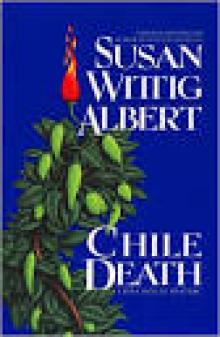 Chile Death
Chile Death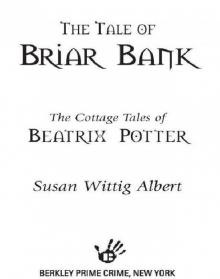 The Tale of Briar Bank
The Tale of Briar Bank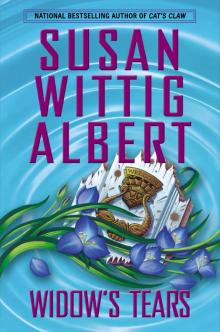 Widow's Tears
Widow's Tears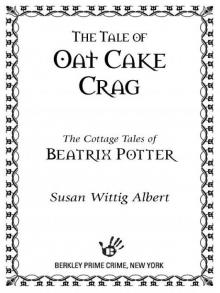 The Tale of Oat Cake Crag
The Tale of Oat Cake Crag Rueful Death
Rueful Death Bittersweet
Bittersweet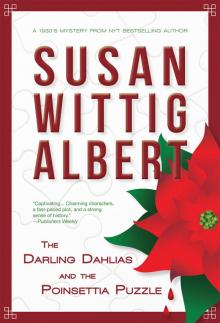 The Darling Dahlias and the Poinsettia Puzzle
The Darling Dahlias and the Poinsettia Puzzle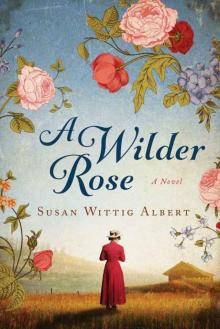 A Wilder Rose: A Novel
A Wilder Rose: A Novel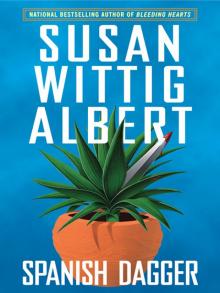 Spanish Dagger
Spanish Dagger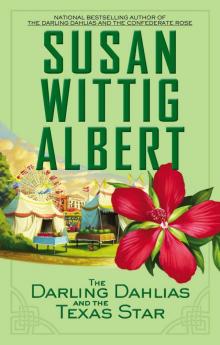 The Darling Dahlias and the Texas Star
The Darling Dahlias and the Texas Star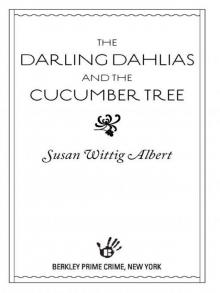 The Darling Dahlias and the Cucumber Tree
The Darling Dahlias and the Cucumber Tree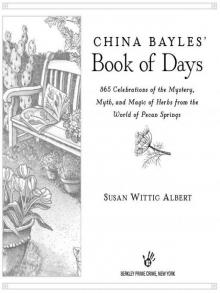 China Bayles' Book of Days
China Bayles' Book of Days Death Come Quickly
Death Come Quickly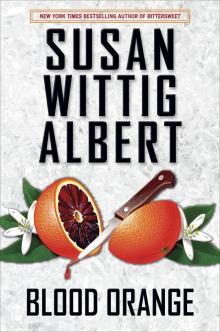 Blood Orange: A China Bayles Mystery
Blood Orange: A China Bayles Mystery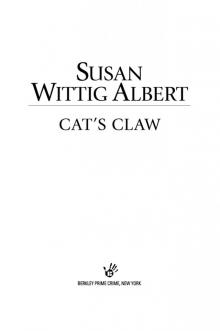 Cat's Claw
Cat's Claw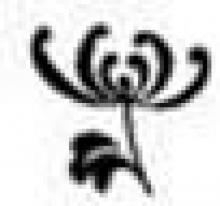 The Darling Dahlias and the Naked Ladies
The Darling Dahlias and the Naked Ladies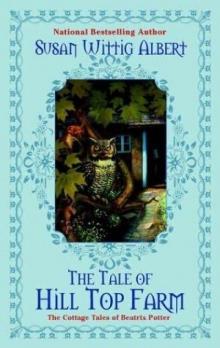 The Tale of Hill Top Farm
The Tale of Hill Top Farm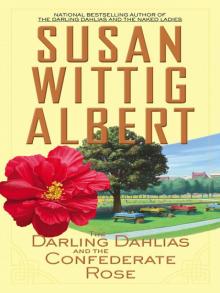 The Darling Dahlias and the Confederate Rose
The Darling Dahlias and the Confederate Rose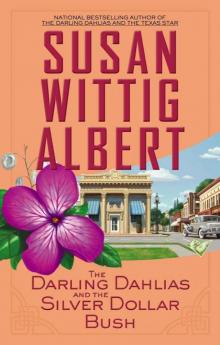 The Darling Dahlias and the Silver Dollar Bush
The Darling Dahlias and the Silver Dollar Bush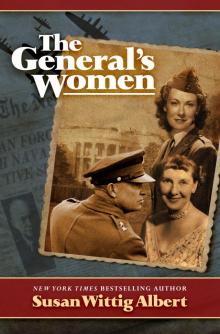 The General's Women
The General's Women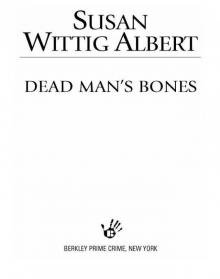 Dead Man's Bones
Dead Man's Bones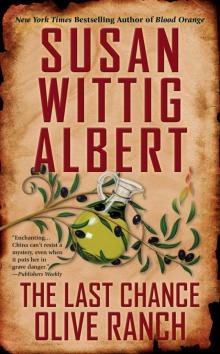 The Last Chance Olive Ranch
The Last Chance Olive Ranch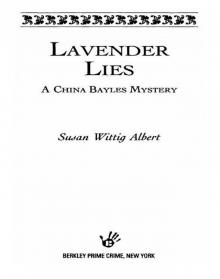 Lavender Lies
Lavender Lies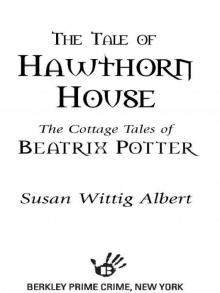 The Tale of Hawthorn House
The Tale of Hawthorn House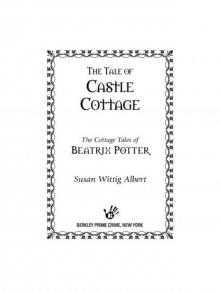 The Tale of Castle Cottage
The Tale of Castle Cottage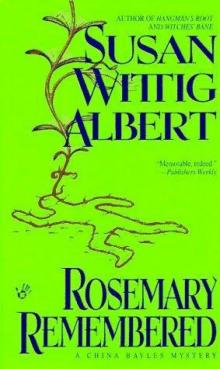 Rosemary Remembered - China Bayles 04
Rosemary Remembered - China Bayles 04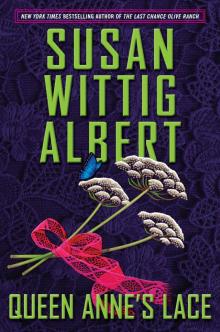 Queen Anne's Lace
Queen Anne's Lace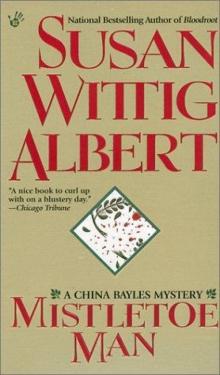 Mistletoe Man - China Bayles 09
Mistletoe Man - China Bayles 09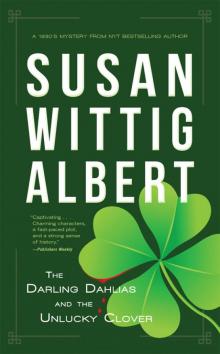 The Darling Dahlias and the Unlucky Clover
The Darling Dahlias and the Unlucky Clover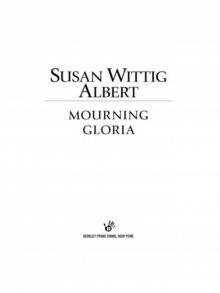 Mourning Gloria
Mourning Gloria The Darling Dahlias and the Eleven O'Clock Lady
The Darling Dahlias and the Eleven O'Clock Lady